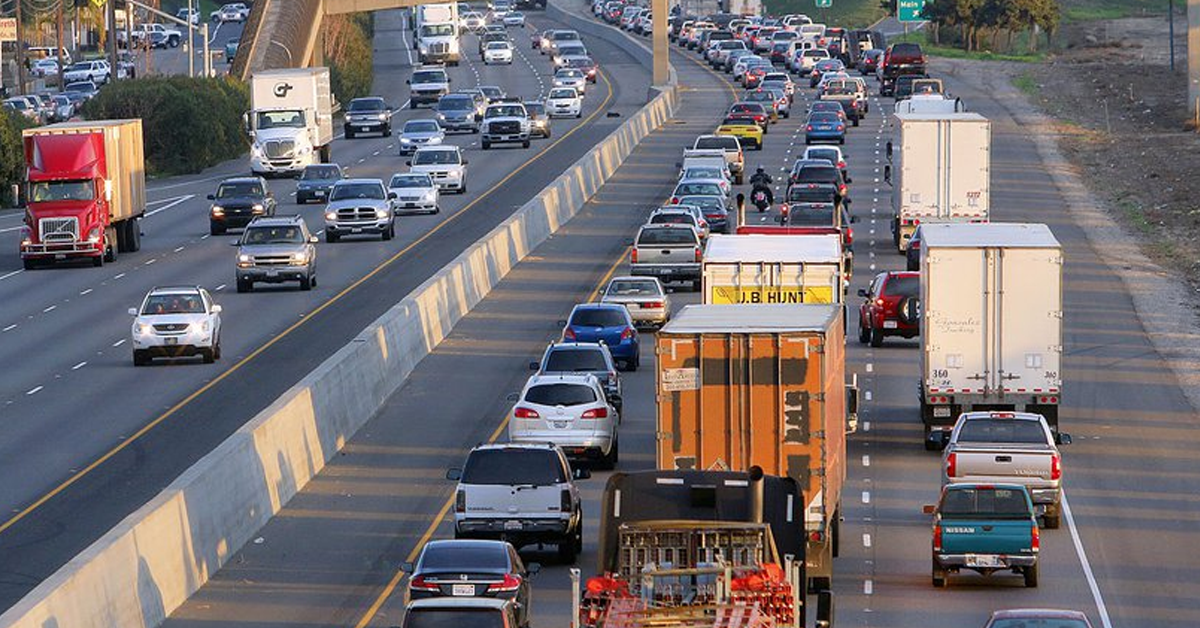Leave it to parks, supposedly that great outdoor unifier of American sentiments, to highlight how identity politics have divided Fresno.
That was what I took to be Council member Steve Brandau’s message at the Oct. 13 City Council meeting. He made valid points on a complex issue. They would have been more powerful if Brandau hadn’t failed to insert three letters into a key word.
Let me provide some context from my perspective.
I missed the morning session. I got to City Hall shortly after lunch, just as city officials began handing out “employee of the quarter” awards. The council chamber was packed. I went for a walk.
I returned in time to catch the last 15 minutes of a long debate on a consulting contract.
Mayor Ashley Swearengin wanted to spend $172,757 to hire Fresno-based marketing agency Bertz-Rosa Strategy & Creative to do some extra community outreach as the city begins to craft a new parks/trails master plan.
Bertz-Rosa would operate as part of an alliance. Its partners would be the local marketing firm of Catalano Fenske & Associates and Fresno Building Healthy Communities. The latter is a nonprofit focused on all aspects of social justice.
Swearengin showed up to make a personal pitch. The council approved the deal on a 4-3 vote. Clint Olivier, Esmeralda Soria and Brandau voted no.
There were lots of side stories.
For example, Cary Catalano is a partner in Catalano Fenske & Associates. Swearengin supported Catalano’s unsuccessful run for a council seat. She appointed him to the Planning Commission. He’s played a public-relations role in many Swearengin initiatives. Friendships, contracts and public money always generate whispers at City Hall.
Soria’s no vote raised some eyebrows. Her middle name could well be “outreach” in light of her constant goading of the administration to do more of it on just about every issue. And she first made a splash on the council during the 2015 budget hearings when she pushed the administration to spend more on parks.
But side stories at City Hall generally have short lives, especially with $173,000 contracts. That’s chump change among local lawmakers.
One aspect of the Bertz-Rosa deal really got under Brandau’s skin. That was the Building Health Communities (BHC) connection.
Late spring 2015 saw another memorable twist in Fresno’s never-ending fight over parks. Budget hearings were coming. BHC began a multi-faceted public-relations campaign to convince City Hall to spend more on green space.
At the heart of this effort was a statistic taken from City Hall documents: 1.02 acres of parks per 1,000 residents in the 93706 zip code (West Fresno) vs. 4.62 acres per 1,000 residents in the 93720 zip code (Northeast Fresno/Woodward Park area).
The explicit point was obvious: There is a stunning inequity between the two zip codes.
The implicit point was no less obvious to most Fresnans: North Fresno has lots of whites, South Fresno has lots of minorities.
BHC’s print campaign included a poster featuring a comparison of the two zip codes and a photo of a young girl. The photo was cropped in a way that displayed half of her face in a gray, drab tone (representing 93706), the other half in bright color (representing 93720).
BHC wanted to put the posters on city buses. City Hall said no – the ad was deemed political. That was a blessing to BHC; the media had a field day with the hubbub.
BHC’s print ad didn’t mention race or ethnicity. But the twin themes of racial and ethnic discrimination were mentioned often in early June 2015 when the City Council held a hearing on whether to fund a parks master plan. BHC supporters attended the hearing in force.
In the end, the council voted to spend the money. Along the way city officials went to great (and largely ineffectual) lengths to show that the numbers in BHC’s ad did not accurately describe the actual distribution of green space in Fresno. But none of this mattered on the race front. North Fresno was once again painted as racist.
Brandau represents Northwest Fresno. Last Thursday he viewed the Bertz-Rosa contract with its BHC component as another attempt to delegitimize the integrity of North Fresno residents. He saw BHC as smearing yet again good Americans with a long-standing falsehood.
I watched as Brandau asked Swearengin to direct BHC in the upcoming outreach campaign to avoid any hint of “us vs. them” rhetoric. Swearengin, like any good politician, nudged the exchange in a direction of her choosing: The contract is clear on BHC’s obligations, and BHC no doubt will fulfill them, she said.
Brandau during a break gave me a written statement.
“Last year, Building Healthy Communities waged a public campaign trying to divide Fresno between north and south on the issue of parks,” Brandau wrote. “Now they are to be put in charge of community outreach for parks. It is like putting the fox in charge of the chickens.”
However, what I found most instructive was Brandau’s one-word description from the dais of BHC’s print ad. He said it was “racist.”
Council Member Oliver Baines, who is African-American and represents West Fresno, sits next to Brandau on the dais. Brandau is white. They don’t always see eye-to-eye on politics. At the same time, they often express a mutual admiration. I’ve watched them in action for nearly four years. I believe they’re telling the truth.
Baines on Thursday took exception to Brandau’s use of “racist” in the context of the BHC print ad. Baines asked Brandau to explain his thinking.
The BHC ad, Brandau said, suggested that “people of color are getting underserved in the city of Fresno.”
Replied Baines: “What’s racist about that?” Take it from someone who has been the victim of racism, Baines said – “That (ad) was not racist.”
I thought as I watched this: Steve, your mistake was leaving out three letters. The BHC ad wasn’t racist. It was racialist.
To be racist is to believe in the superiority of one race over another. This is legally and morally wrong in modern America.
To be racialist is to use racial categories in the setting of public policy. This is the essence of political strategy, legal theory and moral righteousness in modern America.
Fresno City Hall can’t function – nor can any public or high-profile private organization anywhere in the nation – without embracing racialist ideology. The final item on Thursday’s council agenda proved this point.
The item was a brief workshop on the two proposed redevelopment plans for Fresno’s core. You know what I’m talking about – the Downtown Neighborhoods Community Plan and the Fulton Corridor Specific Plan that have been in the works for more than seven years. They’re slated to come to the City Council this month.
The two plans encompass more than 10 square miles, with Downtown pretty much at the center. The foundation for both plans is housing. You can say good housing leads to a vibrant people. Or you can say a vibrant people leads to good housing. Either way, everything about a big city’s destiny depends on housing.
And all the rules for housing come from the federal government. State and local governments play a role, but it’s a role like the one between a private and a general.
The feds’ Affirmatively Furthering Fair Housing final rule reigns (and, come to think of it, reins) over American housing policy. No need here to go into great detail about this rule. It was enough for me to sit through an Affirmatively Furthering Fair Housing workshop at City Hall about a year ago.
The moderator, an out-of-town consultant, filled the council chamber’s overhead screen with map after map showing how one federally-protected class of Americans after another was statistically underrepresented in the tonier parts of North Fresno.
To each map, he said, “Is this the community you want?”
His underlying message: It’s not what the feds want.
(A quick aside: What are those federally-protected classes? The moderator in essence said they’re everybody who isn’t a white male. I couldn’t figure out how the feds plan to make all of Fresno housing statistically fair since only about 15% of the population is white male. But I was an enlisted man in the army – I know how to obey a general’s orders. What I find interesting is that, since it pays in modern America to be part of a federally-protected class, some males considered to be white apparently are rushing to get in on the act. Mike Gonzalez, writing on The Heritage Foundation website, notes that the Obama Administration is recommending adding a new ethno/racial group to the feds’ official list of racial and ethnic categories: MENA. That stands for people who originate from the Middle East and North Africa. According to Gonzalez, Americans originating from this part of the world have long been viewed as “white.” Armenia is tucked between the Middle East’s Turkey and Iran. Does this mean Fresno’s large Armenian community may soon be a federally-protected class?)
The Affirmatively Furthering Fair Housing rule reflects just how racialist our federal, state and local housing policies have become. For example, the feds have a handy-dandy tool for helping states such as California and cities such as Fresno determine how unfair its housing patterns/policies are. This research tool has more than 25,000 words of mandates posing as advice.
A sampling:
1.) “Identify areas with relatively high segregation and integration in the region, and identify the predominant racial/ethnic, national origin, or LEP (limited English proficiency) group(s) living in each area with relatively high segregation. Based on the dissimilarity index, identify the racial/ethnic groups that experience the highest levels of segregation.”
2.) “Describe any disparities in exposure to poverty by protected class in the State. Which racial/ethnic, national origin (including LEP persons), or family status groups are most affected by these poverty indicators in the State?”
3.) “What role does a person’s place of residence play in their exposure to poverty in the State and region? Describe any patterns based on protected class.”
4.) “Describe any environmental laws, programs, policies, and practices (e.g., emissions standards, clean drinking water standard, lead-based paint standards, siting of industrial and energy facilities) in the State and region that affect access to environmentally healthy places of residence for members of protected class groups in the State. Include any relevant interstate compacts or other arrangements.”
5.) “Identify and discuss any overarching patterns of access to opportunity and exposure to adverse community factors by protected class in the State or region. Identify areas that experience an aggregate of poor access to opportunity and high exposure to adverse community factors in the State and region. Include how these patterns compare to patterns of segregation and R/ECAPs in the State and region.”
Such advice goes on and on for more than 50 pages.
As we saw at Thursday’s council meeting, all this racialist public policy percolates down to the local level.
Dan Zack, the city’s assistant planning director, began the workshop with a brief PowerPoint review of the Downtown Neighborhoods and Fulton Corridor plans. The idea is to inspire developers to build thousands of new housing units in the area, he said.
I was surprised at the brevity of Zack’s presentation. These two plans are much admired within the Swearengin Administrtion.
Next up to the microphone was planning manager Sophia Pagoulatos. At first I thought she would simply continue in Zack’s vein. Instead, she talked about trouble.
City Hall has been trying for ages to produce a Housing Element that meets the demands of state housing officials. The Housing Element is a part of any general plan, in Fresno’s case the new 2035 general plan. Local housing activists such as Ashley Werner at Leadership Counsel for Justice and Accountability have repeatedly told city officials that their attempts at producing a robust Housing Element were coming up short. The activists were right.
Pagoulatos said the state found several Housing Element problems requiring immediate attention. Two stick out for my blog: 1.) “Unaccommodated need from prior cycle – 6,200 dwelling units of capacity”; 2.) “Equitable communities.”
The two are connected to each other and to the feds’ Affirmatively Furthering Fair Housing rule.
The “6,200 units of dwelling units of capacity” means City Hall should have tweaked its zoning laws in a way that could lead to another 6,200 units of low-income housing. “Equitable communities” in essence means the 6,200 units of low-income housing can’t be located entirely in traditionally low-income neighborhoods.
In other words, Fresno better have appropriate levels of Section 8 housing in upscale neighborhoods (the latter described as “high opportunity” areas – you know, places with lots of green space) along with a population that meets the racialist formulas of state and federal housing regulators. If not, heads will roll.
Most council members showed little or no interest in Pagoulatos’ comments. Not District 1’s Soria.
Soria grilled Pagoulatos on when the city would get moving on those 6,200 low-income units. Most of all, Soria wanted to know more about “equitable communities.” When, Soria asked, will Fresnans begin to see some of these transformed neighborhoods?
“We’re still working on that,” Pagoulatos said. “We’re open to some ideas.”
Soria doesn’t like vague answers from staff, and she didn’t like that one. Soria pressed Pagoulatos: Identify for the council a high opportunity neighborhood that is slated to get a bunch of low-income housing, thus creating one of the equitable neighborhoods that the state demands (and, by extension, meeting every racialist requirement in the 50-plus pages of mandates in the Affirmatively Furthering Fair Housing rule).
Pagoulatos’ answer: Downtown.
Said a stunned Soria: “So, is Downtown considered a high-opportunity area? Am I hearing you correctly?”
“Well,” Pagoulatos said, “I think the transformation is underway. The vision and the plan is to create a high-opportunity area in Downtown.”
What are the chances that the notion of Downtown Fresno as a high-opportunity area will pass muster with the government officials who gave us the Affirmatively Furthering Fair Housing rule?
I’ll tell you: Zero chance. The racialist numbers will never add up.
Once America cast its fate with racialist policy-making, there can be no end to statistical Balkanization of every facet of life.
That includes a parks master plan. Contract language or no contract language, Fresno Building Healthy Communities has no choice but to turn its taxpayer-funded outreach efforts into racialist proselytizing. Higher law demands it.
Council Member Brandau – your fears are spot on. But it’s too late to do anything.












You are spot on with your statements and observations. I just wish that more people would pay attention to what actually occurs within Fresno.
Federal law does include Caucasians as a protected class. Persons who are disabled, families with children, religion, gender, gender identity are all protected and many Caucasian people are in those protected categories.
Within the Caucasian race are many who are protected, Mexicans, Spaniards, and many more are Caucasian. Being Caucasian has to do with the bloodline, not ethnicity.